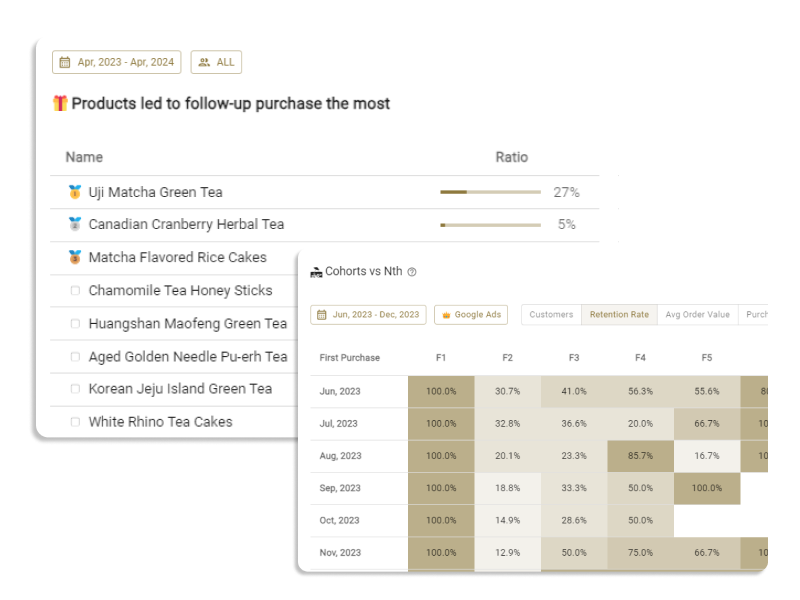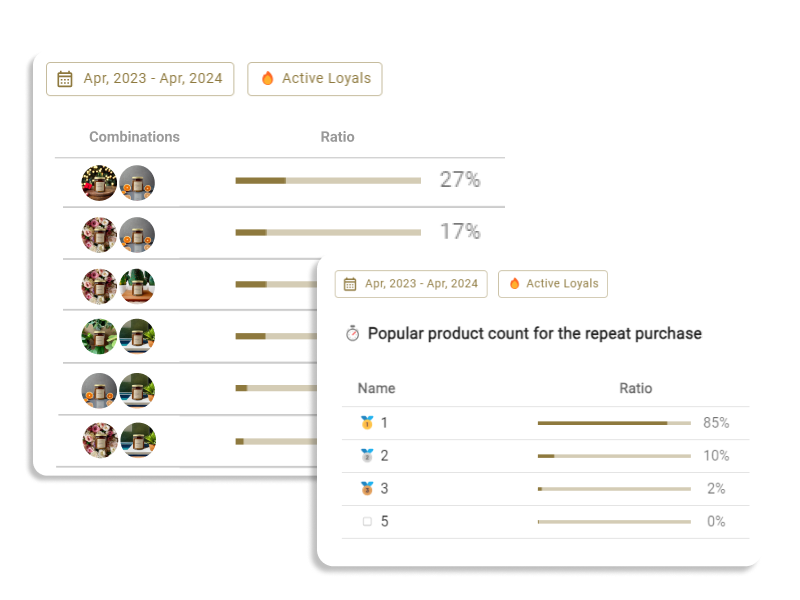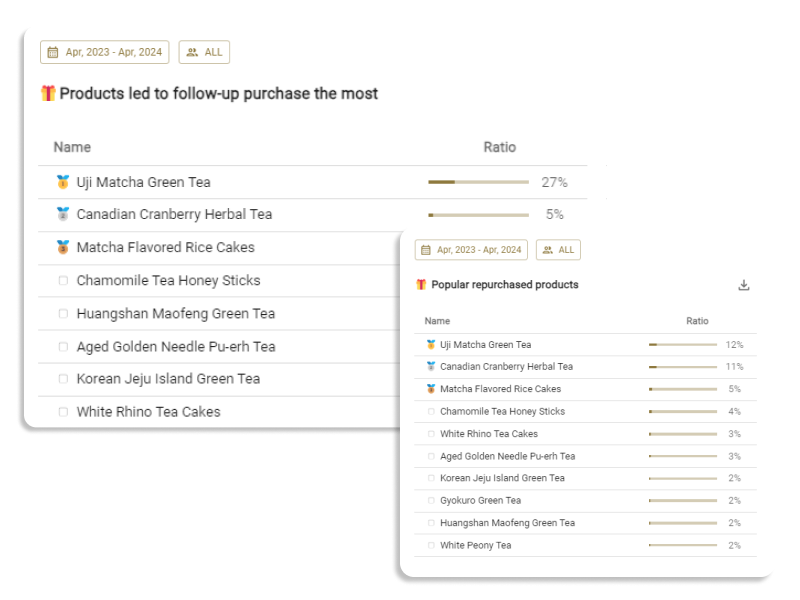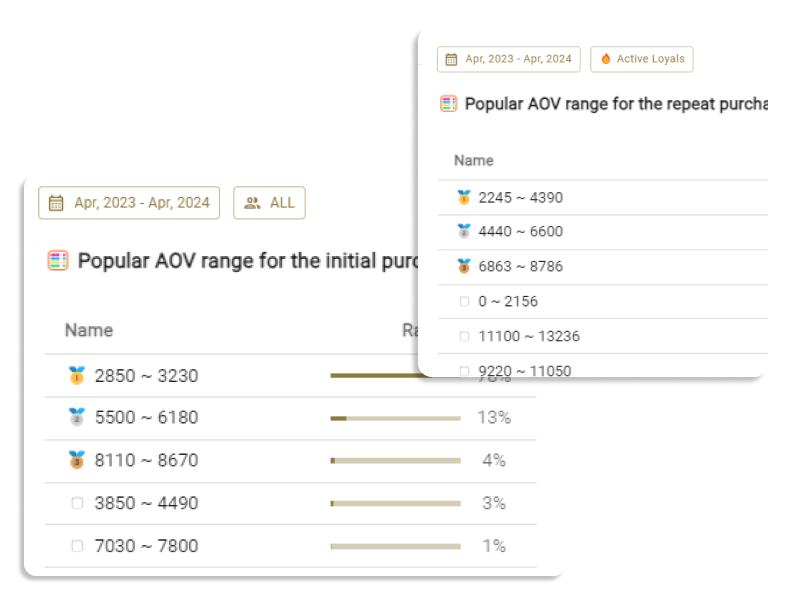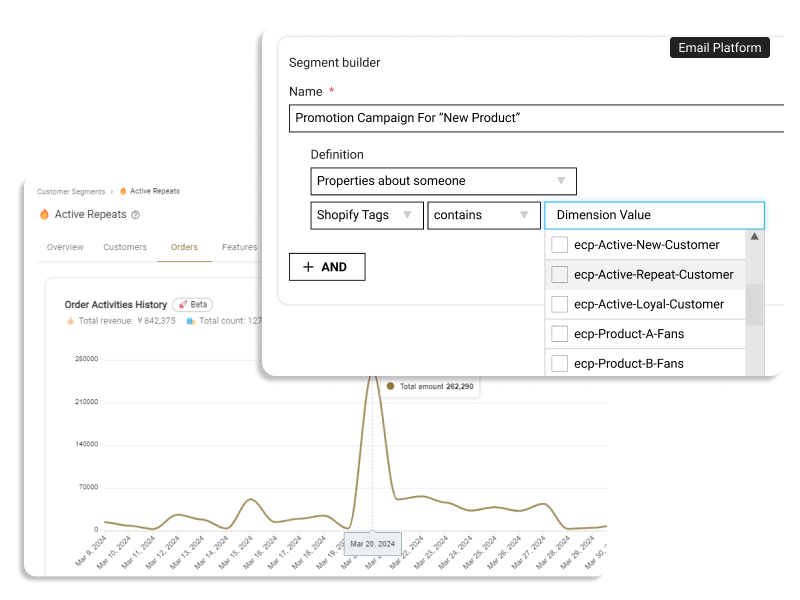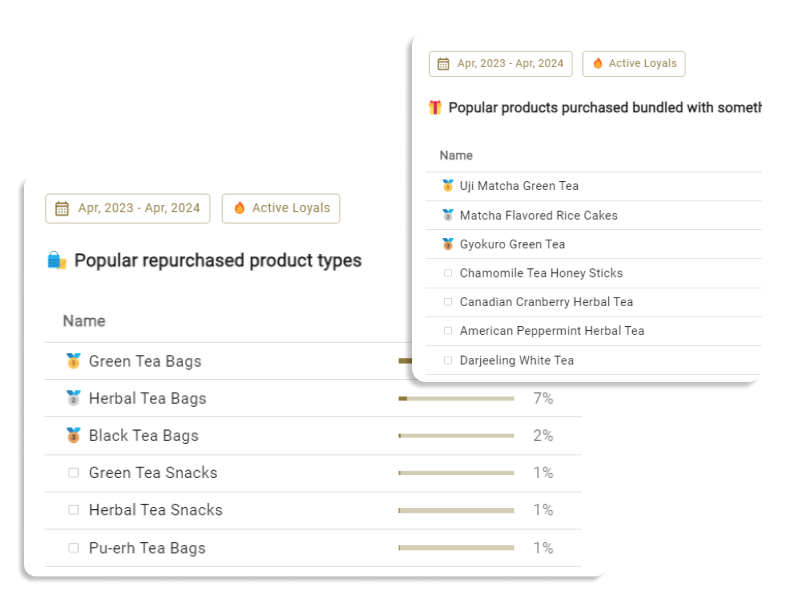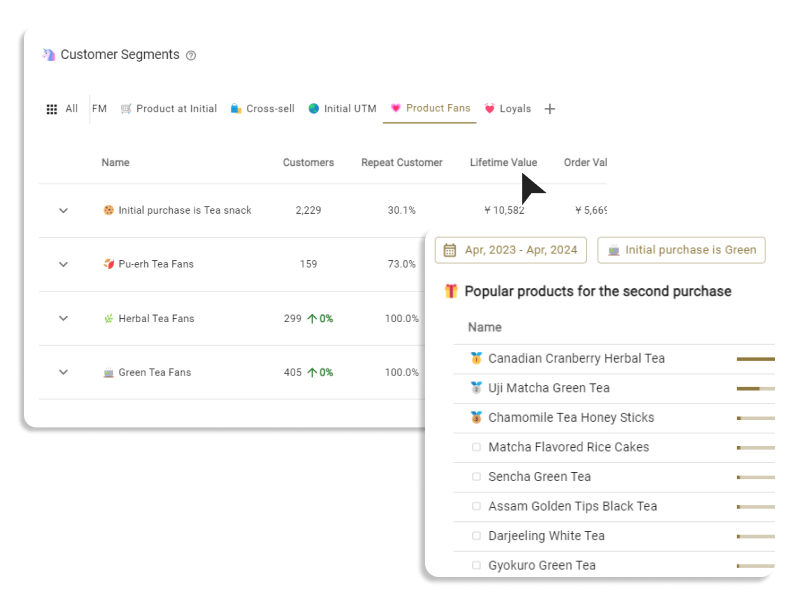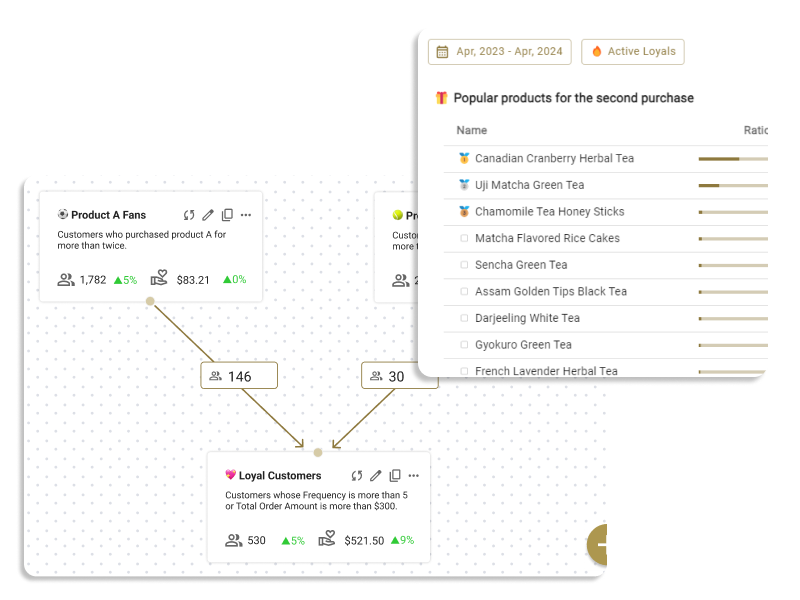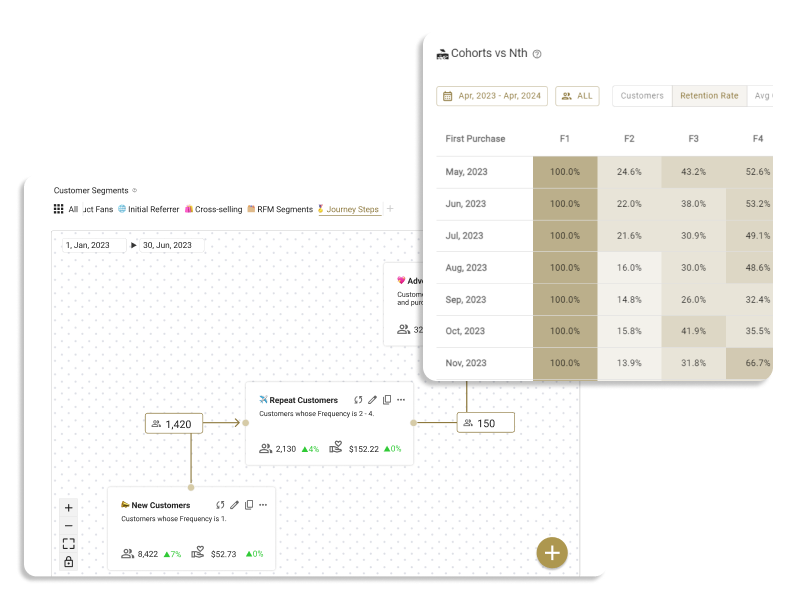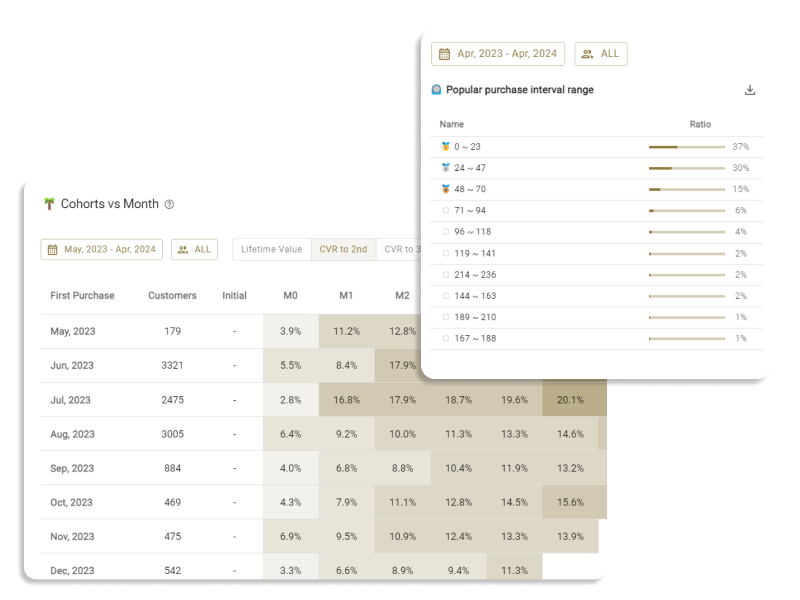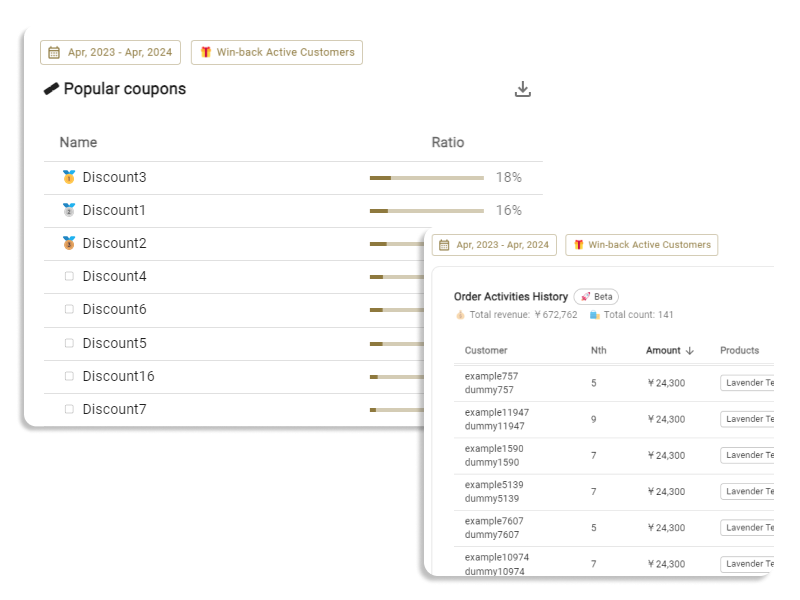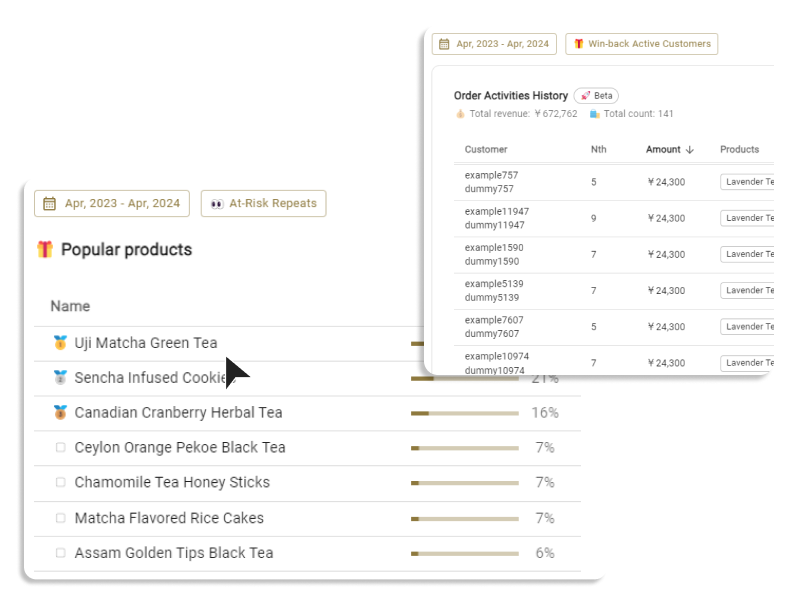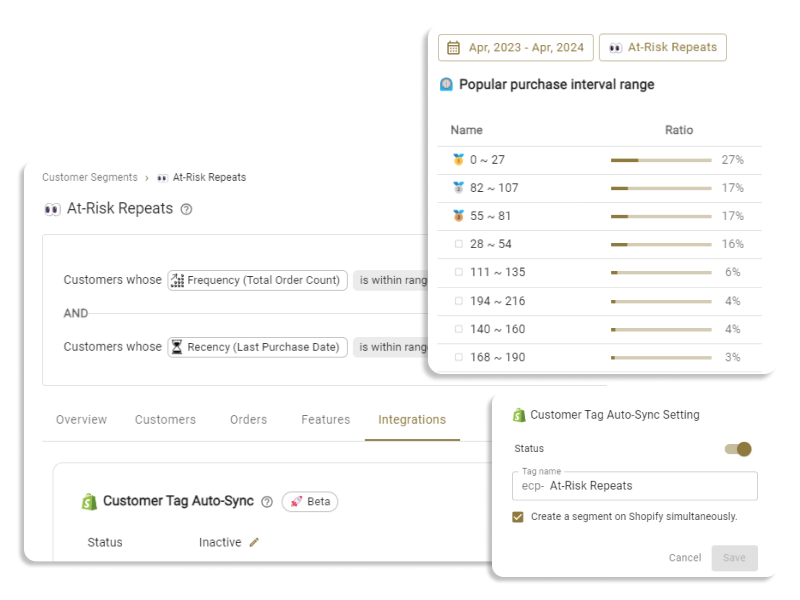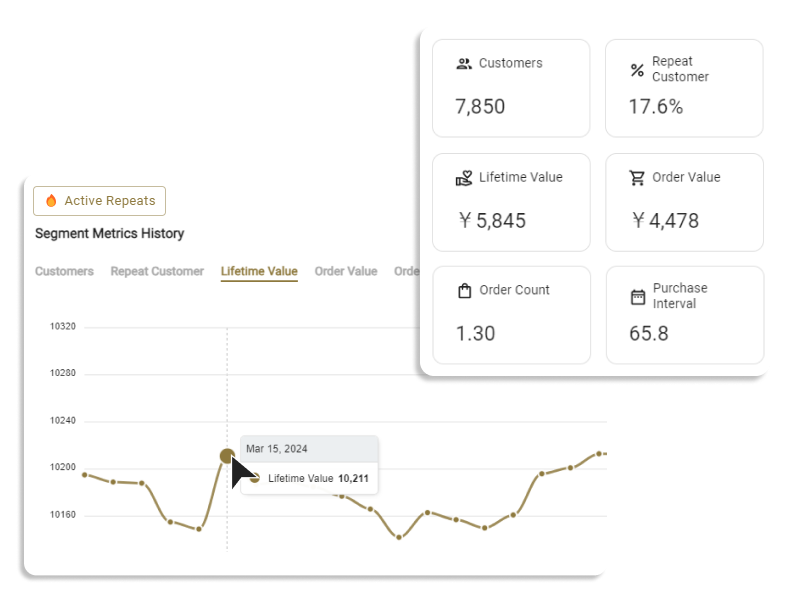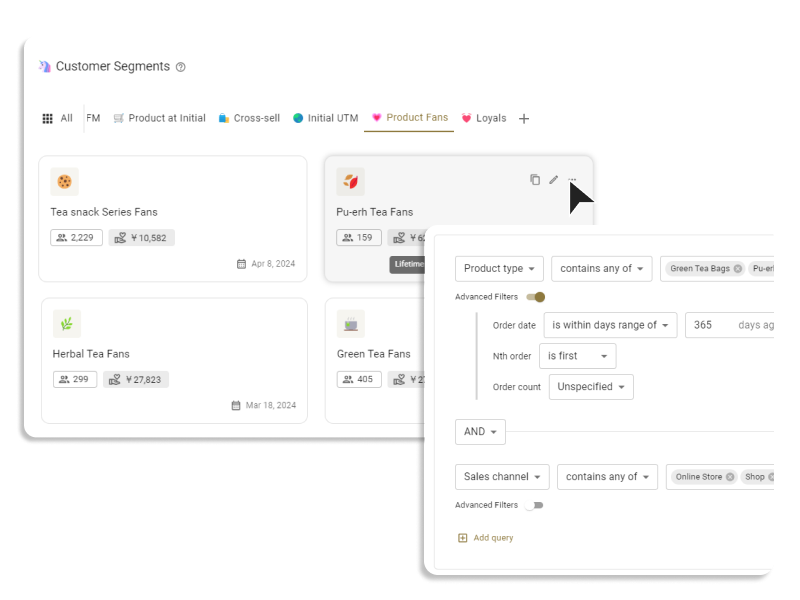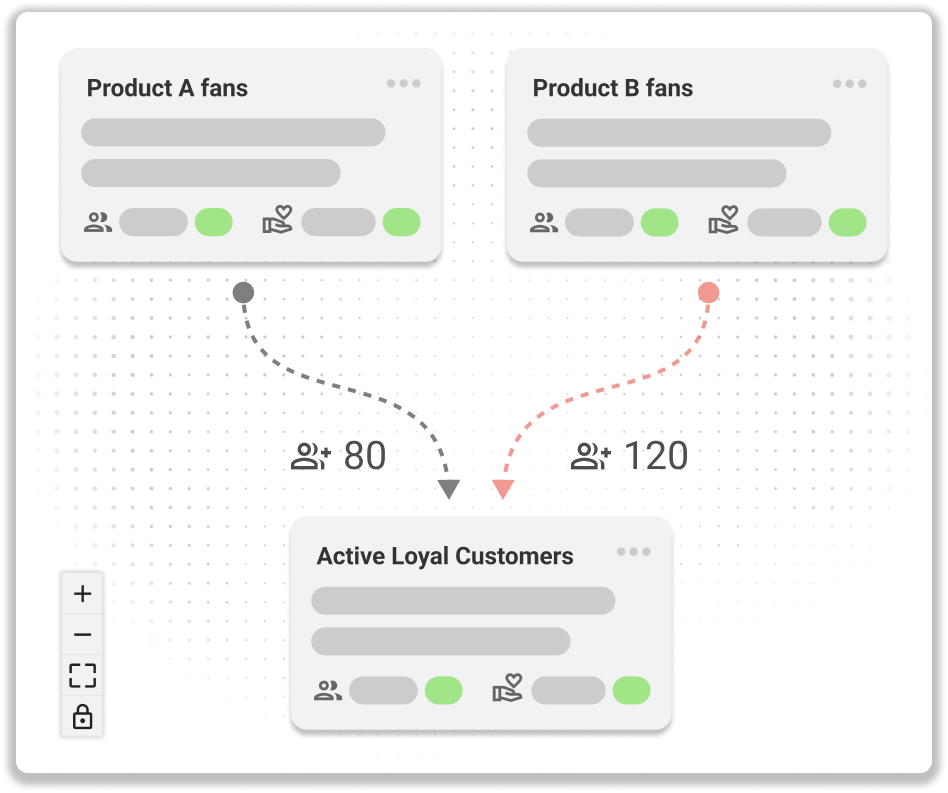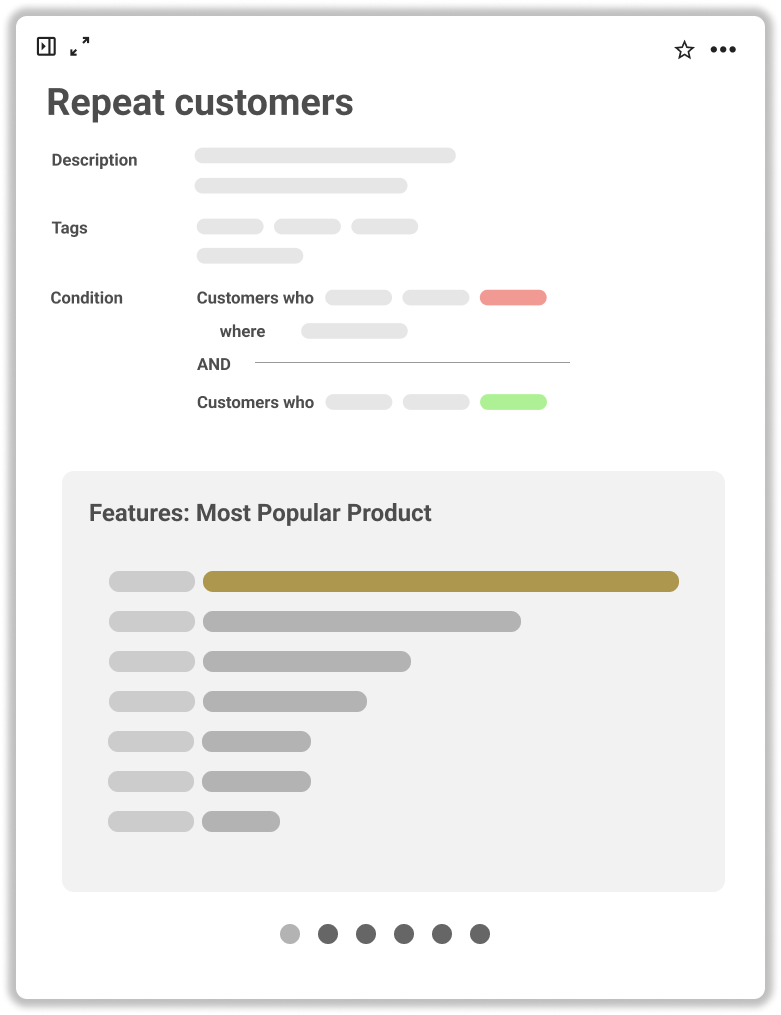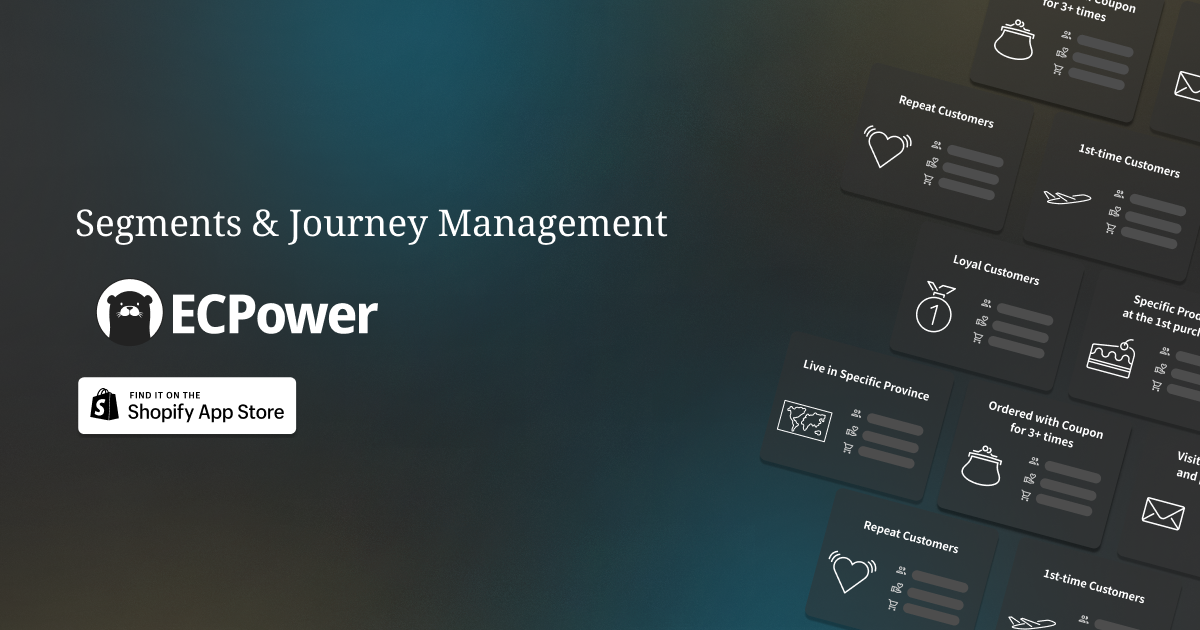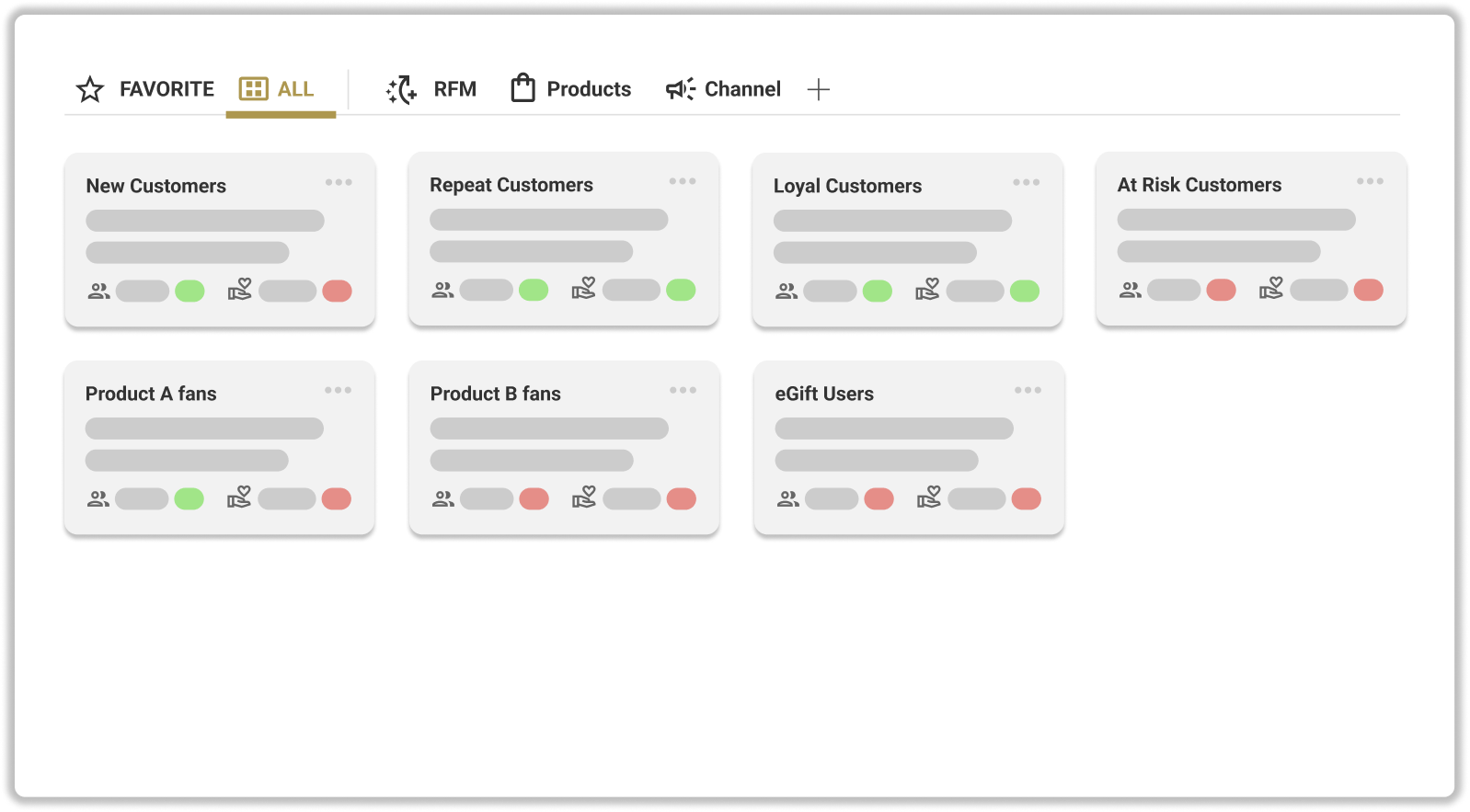Introduction
This article is intended for e-commerce marketing professionals working to improve Customer Lifetime Value (CLV), comparing four standard email marketing tools on Shopify to explain which tool is suitable for e-commerce stores. It is a recommended read for business operators looking for tools to replace Klaviyo and those wanting to upgrade from Shopify Email.
Importance of Email Marketing
What is Email Marketing in E-Commerce?
Email marketing refers to the use of emails to promote products or services, maintain touchpoints with customers, and sustain engagement. "newsletters" are also included in email marketing activities, but it particularly denotes activities aimed at promoting sales by sending personalized messages to a specific target. In e-commerce, it is particularly beneficial for maintaining relationships with existing customers and leading to repeat purchases.
Why is Email Marketing Important in E-Commerce?
The importance of email marketing to existing customers has been increasingly recognized in recent years. One major reason is that as the hurdle for acquiring new customers rises, enhancing the CLV (Customer Lifetime Value) of existing customers has become more important.
In e-commerce, the CLV of customers can be broken down into elements such as "average order amount," "purchase frequency," and "customer lifespan." Among these, email marketing is a measure that can improve "purchase frequency" and "customer lifespan" by regularly maintaining touchpoints with existing customers, making it one of the important means to enhance CLV.
Reference article:
Four Standard Email Marketing Tools on Shopify
Shopify Email
“Shopify Email” is a unique email marketing app provided by Shopify since 2019. When compared to other standard email marketing apps on Shopify, it may lack in features, but it is a high cost-performance app due to its considerably lower usage fees and strong integration with store data due to being native to Shopify.
For detailed explanations and features of Shopify Email, refer to this article.
Klaviyo
“Klaviyo” is an email marketing service provided since 2012. It was designated as the “recommended email marketing tool” for Shopify Plus in 2022, and its operating company also receives investment from Shopify.
As of May 2023, around 110,000 Shopify stores worldwide are using Klaviyo, making it a standard email marketing app indeed.
For detailed explanations and features of Klaviyo, refer to this article.
Omnisend
“Omnisend” is an email marketing service provided since 2014, boasting excellent integration with Shopify. It is often compared to Klaviyo and is in a competitive relationship, offering almost equivalent features. As the name suggests, it is a marketing platform with a focus on omnichannel, allowing marketing through “Web notifications” and “SMS” besides email.
As of May 2023, Klaviyo can only send SMS to the USA, Canada, the UK, Australia, and New Zealand, so if you want to use SMS marketing in other country, Omnisend becomes a strong candidate.
For detailed explanations and features of Omnisend, refer to this article.
Mailchimp
“Mailchimp” has been provided since 2001 and is a well-established email marketing service that can integrate with Shopify. It can be used not only by e-commerce businesses but also by various operators due to its broad integration capabilities with various e-commerce carts and CRMs like Sales Force.
It's noteworthy that while Mailchimp is extensively integrated and used, it is not a tool optimized specifically for e-commerce. It is often compared to Klaviyo as an email marketing tool integrated with Shopify.
Its features include a variety of service integrations and a wealth of marketing automation templates. Various automation templates published by Mailchimp Expert enable the utilization of various automatic flows, including integration with CRMs like Sales Force and advertising services like Google Ads.
For detailed explanations and features of Mailchimp, refer to this article.
Comparison of Standard Email Marketing Tools on Shopify
Firstly, let’s introduce a summary table of this article. When comparing each tool with relative evaluations from five perspectives, the results are as follows.
.png)
Let's summarize by each point of view.
1. Design Templates and Email Builder
Continuity is crucial in email marketing. However, anyone who has ever run an email campaign knows creating attractive email designs from scratch without damaging the e-commerce brand's image is extremely challenging.
The extent to which "Templates" and "Email Builders," allowing the creation of decently designed emails in a short time without a designer's help, are enriched is very important. You'd want to choose tools with flexibility in customization, like adjusting layout and colors, to match your brand.
However, each tool has a number of prepared templates, allowing you to start creating emails from a template suitable for your company.
If forced to name a tool superior in terms of templates, it would be Klaviyo. While all tools prepare their designs, in Klaviyo's case, users can use over 2000 user-created design templates directly (Klaviyo Showcase), even filtering templates by open rate and click rate. This is a unique feature of Klaviyo, which has a large user community.
https://showcase.klaviyo.com/sc/

For those conscious about “brand design consistency,” Shopify Email and Omnisend have superior features. You can automatically apply logos and brand colors to all templates from the “Template Branding” page.

Regarding Email Builders, the point is being able to create HTML emails with no code (drag & drop). However, as of 2023, it is basically a feature implemented in all tools. While there are minor differences in operation and user-friendliness, it isn’t a decisive factor in choosing a tool.

2. Marketing Automation, Automated Flow
Automation is probably the most interesting function in email marketing, allowing the establishment of mainstream marketing methods with certain effects like “Cart Abandonment Follow-Up Emails,” “Post-Purchase Follow-Up Emails,” and “Birthday Emails.” Automation helps reduce the workload of marketing managers, allowing focus on more creative tasks.
Some tools offer advanced features allowing the flexible construction of drip campaign flows by setting up your events & triggers, not just basic delivery automation.
From the perspective of automation, Mailchimp seems to be a step ahead.
Of course, Klaviyo and Omnisend allow you to create important automatic flows in e-commerce like “Welcome Emails,” “Cart Abandonment,” and “Lapsed Customer Uplift” from nearly 50 rich scenarios & templates. Their Flow Builder’s UI is clear, and is generally satisfactory for normal usage.
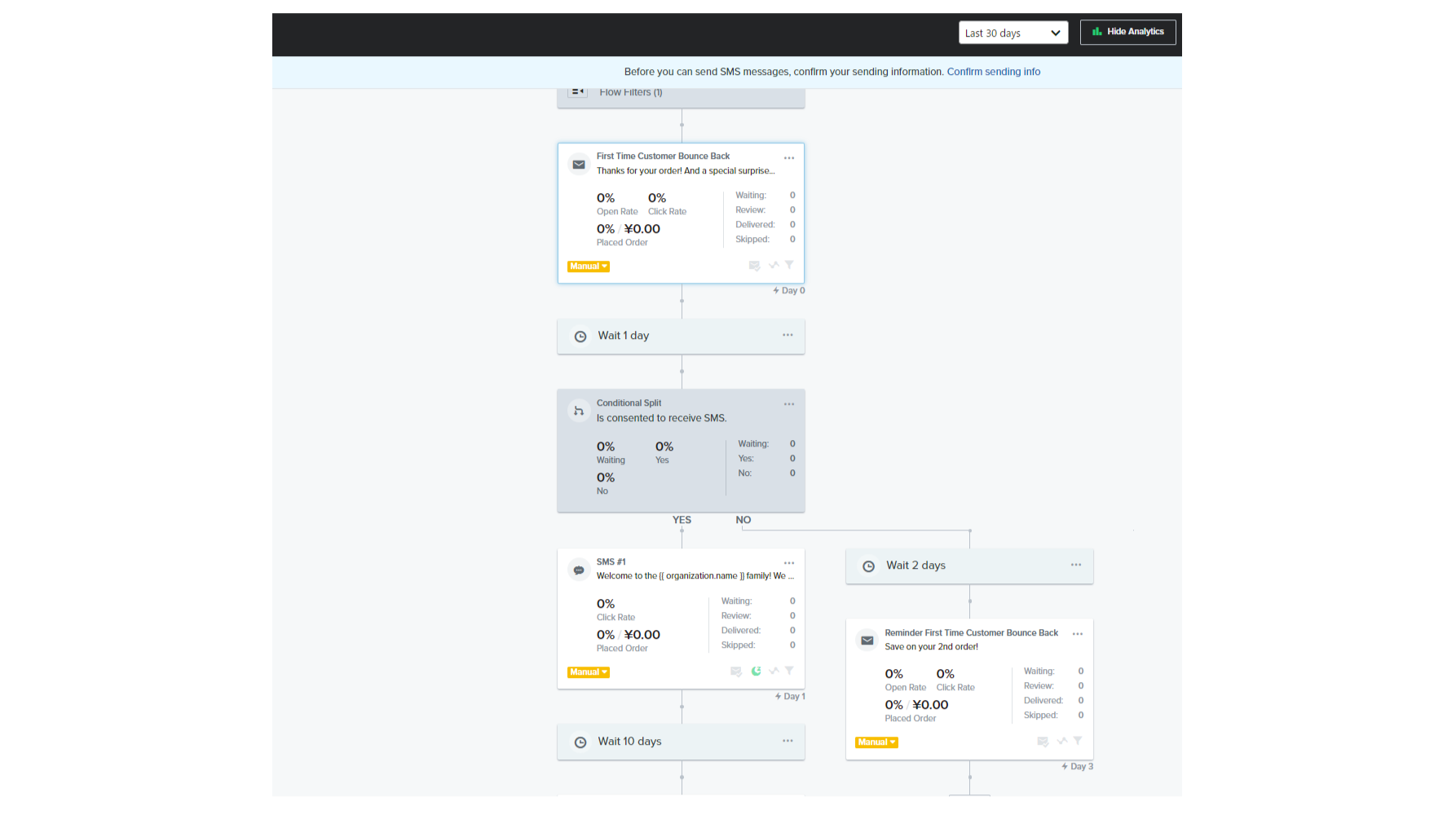
Mailchimp excels in integration with other services such as Slack, Salesforce, Mixpanel, Canva, allowing actions to be set, like notifying Slack when a VIP customer makes a purchase, integrating with business systems used regularly.
Moreover, "Mailchimp Expert" frequently develops and releases templates, currently having the most number & variation of scenarios & templates.

However, Shopify Email has recently implemented automation features, so as of now, it seems to have only the most basic functionalities. If planning marketing automation, it is recommended to consider Mailchimp or Klaviyo first.
3. Segment Email Distribution Functionality
A quite overlooked yet vital feature is the “Segment email” function.
According to studies, 70% of e-commerce operators send mass delivery emails. However, mass delivery emails can turn into vague messages unseen by both sender and recipient. They can become just one of the many similar SMS messages or emails, leading to campaigns that don’t get opened or bring results.
“Segmentation” means dividing customers into groups with similar purchasing intentions, needs, and preferences. By dividing customers into appropriate size segments and communicating accordingly, you can conduct email campaigns with high conversion and engagement. Such email campaigns are often called “Segment Delivery.”
There are four main types of segmentation: Behavioral Segmentation, Psychological Segmentation, Demographic Segmentation like gender and age, and Geographic Segmentation like residence. Among these, the most important and practical is “Behavioral Segmentation.”
In marketing activities for existing e-commerce customers, it’s crucial whether you can conduct segment deliveries utilizing behavioral data like “actions on the site and what kind of products they are purchasing.”
Among the four tools mentioned, Klaviyo can perform the most superior segment delivery.
Of course, Mailchimp and Omnisend can also perform basic behavioral segmentation utilizing order data, but you might feel that creating the segment conditions you want can be restrictive.
For example, if you want to create a customer segment of “fans of product A” in Klaviyo, you can create a customer segment of “customers who have purchased product A three or more times.”
On the other hand, when trying to create a similar segment in Mailchimp or Omnisend, you can only create a segment of “customers who have purchased product A at least once,” meaning you can’t specify exact numbers or durations.
Saying someone is a fan after one purchase may somewhat differ from reality.

Moreover, Shopify Email is quite behind in this aspect. Rather than a feature of Shopify Email, it requires creating segments from the Shopify customer management screen, requiring you to create filtering conditions in a code-like form, and the data you can select as conditions are quite limited.

While the impression for Segment email Delivery Functionality is that Klaviyo is the only choice, by utilizing it in combination with ECPower, you can perform segment deliveries equal to or more than Klaviyo with Omnisend, Mailchimp, and Shopify Email.

The customer segment tool ECPower can fully utilize Shopify store data, allowing the creation of advanced customer segments with no code. Also, you can compare and manage the created segments from viewpoints like CLV, average order amount, and purchase frequency, enabling effective email marketing activities aimed at improving CLV. If you are interested, please check the product site.
4. Measurement of Campaign Performance
To appropriately evaluate and improve email campaigns, it is crucial to understand email marketing indicators such as “open rate” and “click rate”. Most email marketing tools can measure these data; however, in e-commerce, not just clicks but analyzing whether it led to an “actual purchase” is most crucial.
Additionally, a common issue with “open rate” and “click rate” is determining whether the numbers are generally good or bad. These indicators can vary in average levels depending on the industry and product, making it a challenging theme to judge unilaterally. Some email marketing tools offer functions to view comparisons with industry standards by utilizing data from businesses using the tool.
Nevertheless, each tool can produce at least the necessary indicators for each campaign, and the differences are merely in the detailed data visualization.
If one were to point out, the data available in Shopify Email’s reports are a bit richer compared to other tools. For example, tracking site visits via email and measuring campaign sales, order amounts, and product sales numbers is a strength unique to the Shopify native App.
On the other hand, Klaviyo and Mailchimp can utilize other customers' data, allowing you to determine whether the “open rate” and “click rate” for a campaign performed well compared to industry averages.
5. Pricing
One cannot overlook the pricing structure. Since there isn’t much of a significant difference in terms of email-sending functionality among email marketing tools, each company is devising its pricing structure to cater to specific business needs.
Klaviyo, Omnisend, and Mailchimp have relatively similar pricing structures, adopting a freemium model divided mainly into "free plans" and "paid plans."
However, as the free plans of all these companies allow registering only up to 250-500 email addresses, they are practically not very useful for e-commerce businesses of a certain scale, serving merely as plans to try out features for free.
Paid plans for all three are structured in stages based on the “number of email addresses.” For example, as of May 2023, Mailchimp’s pricing is as follows:
- 5,000 email addresses: $63.12
- 10,000 email addresses: $83.92
- 30,000 email addresses: $211.62
Though the names vary by tool, there are plans like the Standard Plan allowing the use of all basic features, and the Pro Plan offering enhanced support and access to some exclusive features. Essentially, the price is determined by the plan × the number of email addresses.
Shopify Email has a unique pricing structure, distinct from other standard tools, with no charges based on the number of email addresses but simply a pay-per-use charge based on the number of emails sent. As of May 2023, the first 10,000 are free, and thereafter it’s pay-per-use, with a charge of $1 per 1,000 emails sent.
Let's actually compare which tool is cheaper. The cheapest tool can vary depending on the number of email addresses and the frequency of email sending, but for this comparison, let's assume a business with 30,000 email addresses, sending 5 emails per person per month.
Under these conditions, Shopify Email is the cheapest at $140, followed by Mailchimp at $211, Omnisend at $270, and Klaviyo at $500.
It is surprising that Klaviyo costs around twice as much as other standard tools (more than three times compared to Shopify Email).
Shopify Email can keep the usage fee low when the number of email sendings is small, but note that the fee can increase significantly, to $290, when the sending frequency is high (for example, 10 emails per person per month). If you are going to send that many emails, considering the functionality, it might be worth considering switching to Mailchimp or Omnisend.
Which Tool Should You Choose and Why?
If there’s no budget constraint, Klaviyo is recommended.
Each tool has its unique features, merits, and demerits, and it’s impossible to universally determine the most recommended tool. However, if budget is not a constraint, Klaviyo, superior in terms of functionality, is the most recommended tool.
For stores accustomed to operating email marketing and can utilize various features, it is a highly recommended tool. For medium to large companies that can secure a certain budget, the usage fee might not be a significant concern.
Conversely, if one cannot fully utilize its features, they may end up paying a considerably high fee.
If you want to sophisticate email marketing, but feel Klaviyo is expensive, Omnisend or Mailchimp is recommended.
If you find Klaviyo even slightly expensive, Omnisend or Mailchimp is recommended. They allow usage of a feature set close to Klaviyo at nearly half the price, and regarding automation, Mailchimp can do more than Klaviyo.
Omnisend gives the impression of being a well-balanced tool, including in segment email delivery.
For E-commerce stores in the launching phase, start with Shopify Email.
For newly launched E-commerce stores with fewer customers, if there are no particular preferences, it’s recommended to start with Shopify Email.
Shopify Email does not charge based on the number of customers, and with a free quota of 10,000 emails per month, it suffices to a certain extent.
Although other standard tools also have free plans, there’s a high likelihood of quickly reaching the limit as the number of customers rapidly grows. When you start feeling unsatisfied with Shopify Email’s functionalities, it is recommended to consider switching to Klaviyo, Omnisend, or Mailchimp.
Also, for stores with a stable number of customers but no plans to send many emails at present, Shopify Email is a cost-effective option. With other standard tools, you might be charged high fees based on the number of customers (number of email addresses), even if no emails are sent.
Conclusion
In this article, we compared the standard email marketing tools in Shopify—Klaviyo, Shopify Email, Omnisend, and Mailchimp—and introduced recommended tools based on different types of E-commerce stores. Please also check individual introduction articles for each of these tools.
When considering solely from the functional aspect, Klaviyo is indeed the most superior. However, Mailchimp and Omnisend also equip functionalities for automation that are equivalent or superior to Klaviyo, and it is appealing that they can be used for about half the price of Klaviyo.
Mailchimp, Omnisend, and Shopify Email are weaker in terms of segment email delivery compared to Klaviyo, but by using them in combination with ECPower, segmented emails equivalent to or more than Klaviyo can be performed with Omnisend, Mailchimp, and Shopify Email.
Customer segmentation tool, ECPower, can fully utilize Shopify store data to create advanced customer segments without coding. Also, since created segments can be compared and managed from perspectives such as CLV, average order amount, and purchase frequency, it allows effective implementation of email marketing activities aimed at improving CLV. If you are interested, please check the product website.

![[2023] Shopify email Marketing Tool Comparison](https://assets-global.website-files.com/642aaea322dda262581bd474/65162ad833d9510e36101503_Compare.png)

